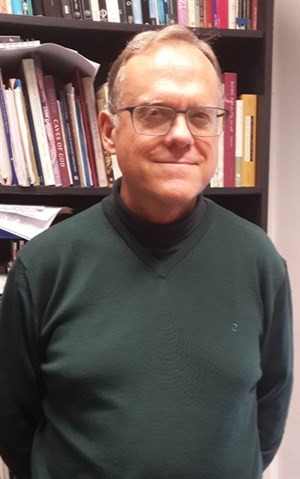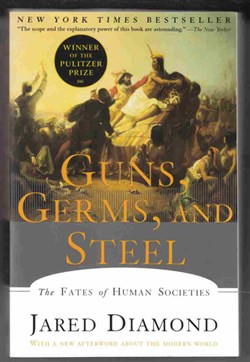Charles Gates, Senior Lecturer, Department of Archaeology
BY MELİS ERDEM (ARCH/II)
 I decided to study archeology only when I was halfway through my undergraduate years. The seeds had been planted, though, when I was a boy; at home there were books dealing with the ancient world that enthralled me. One of these was “A History of Egypt” by James Breasted, reprinted in 1919. My great-grandmother’s name was written inside; she had traveled to Egypt in the 1920s. Breasted was the founder of the Oriental Institute at the University of Chicago and a famous Egyptologist. When I was little, the book was too complicated for me to read through, but it had wonderful photographs of mummies, pyramids and objects that still fascinate me today.
I decided to study archeology only when I was halfway through my undergraduate years. The seeds had been planted, though, when I was a boy; at home there were books dealing with the ancient world that enthralled me. One of these was “A History of Egypt” by James Breasted, reprinted in 1919. My great-grandmother’s name was written inside; she had traveled to Egypt in the 1920s. Breasted was the founder of the Oriental Institute at the University of Chicago and a famous Egyptologist. When I was little, the book was too complicated for me to read through, but it had wonderful photographs of mummies, pyramids and objects that still fascinate me today.
The book I really want to mention, though, is “Guns, Germs and Steel” by Jared Diamond. This is not something I read when I was young; it was published in 1998. But if this book had been available when I was a student, I’m sure it would have made a huge impact on how I was going to explore the ancient world. This is a book that deals with big questions about the past of humanity, all over the world, written in a clear and lively manner accessible for the non-specialist. The breadth of Diamond’s interests is inspiring. A professor of geography at UCLA, he has a background in physiology, evolutionary biology, ornithology and ecology and, in addition, great knowledge about history, archaeology, anthropology and linguistics. He draws on all these fields in this discussion.
The big question he asks is, why did Europeans, not Africans, Australian aborigines or native Americans, come to dominate the globe? His answer is based on environmental and ecological issues. He argues that different environments in different parts of the world either helped people along in developing food production, technology and other innovations, or did not. For example, Eurasia, which is the continent he focuses on, had the most developed food production early on because it had the most varieties of wild plants that were useful for food and that could be domesticated; the same goes for the animals there. Other continents had far fewer plants and animals that would be suitable for domestication. In complete opposition to Eurasia, Australia had no suitable plants at all, and any big animals that might have been candidates for domestication were killed off soon after humans first arrived. So, differences in development, say between Australian aborigines and British colonists, came about not because of innate biological differences (as it was popular to claim in the 19th century), but because people in Eurasia benefited from environmental advantages that led to their technological progress.
Diamond focuses first on the development of food production (or lack thereof) on the different continents. The rise of food production, replacing food foraging (hunting wild animals and collecting wild plants), is important because of the effects that followed: a production of surplus food, increased population, and new specializations of work. Not everyone had to be a provider of food, a farmer; some people could do other things, and this led to increased social complexity, social stratification and the rise of the state. 
The “germs … and steel” of the title refer to technological advances. Diamond notes there are many places in the world where technological innovations have occurred, but this does not happen that frequently. What helped Eurasia was its big land mass across which new ideas could spread easily from one place to another. In contrast, in the Americas, there is only a tiny little connector (today, Panama) between the two continents, a real bottleneck for the spread of technology. Although writing systems were invented in ancient Mexico, not even the idea of writing reached South America. As for the “germs,” this refers to the diseases that arose from the close proximity of humans and domesticated animals, in particular in Eurasia. Over the centuries, Eurasians developed immunities to these diseases; peoples of the Americas, Australia and the Pacific, lacking such immunity, would be fatally vulnerable to the diseases brought unwittingly by the Europeans from the 16th century on.
Diamond is comfortable writing about all parts of the world, not only Europe and the Americas, but also Africa, Australia and even New Guinea (a mysterious place for me), where he has done research. This is a book that encourages readers to ask the big questions about human development—why we are here in the way we are—and is not content to explore just a narrow research topic. In concluding, he notes other big questions that he might address if he could extend the book — an invitation for us readers to keep thinking, reading and learning.
